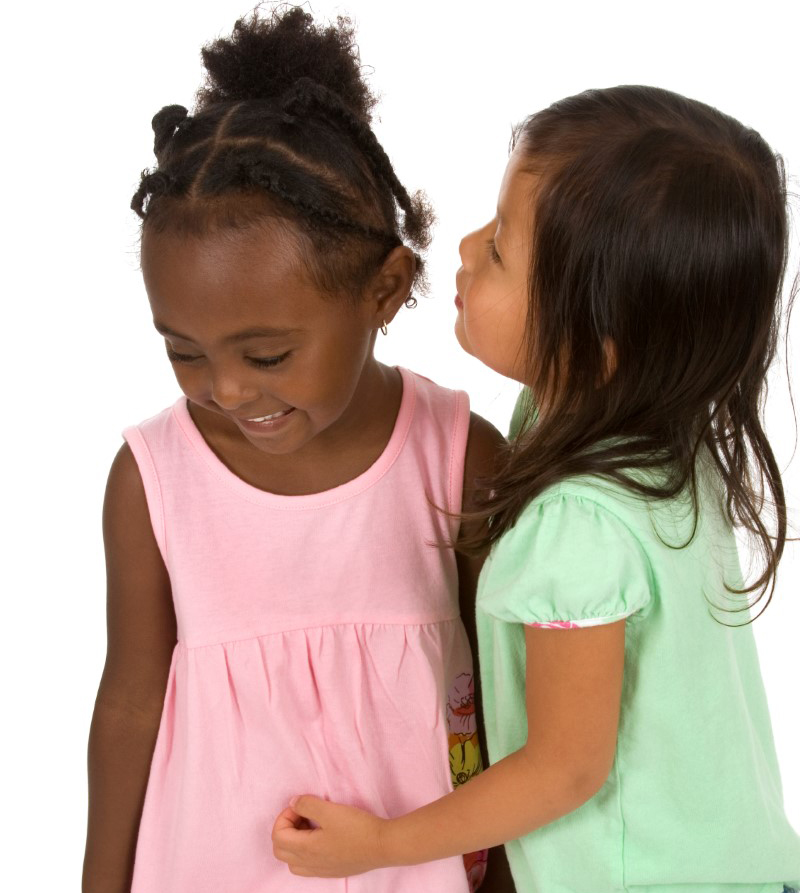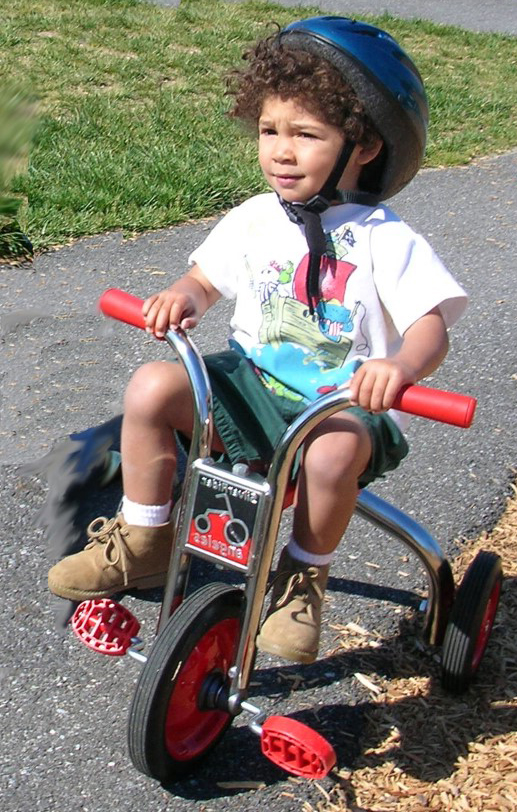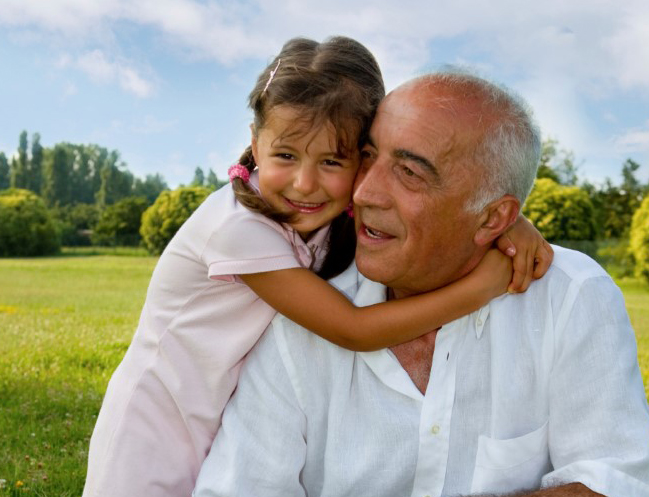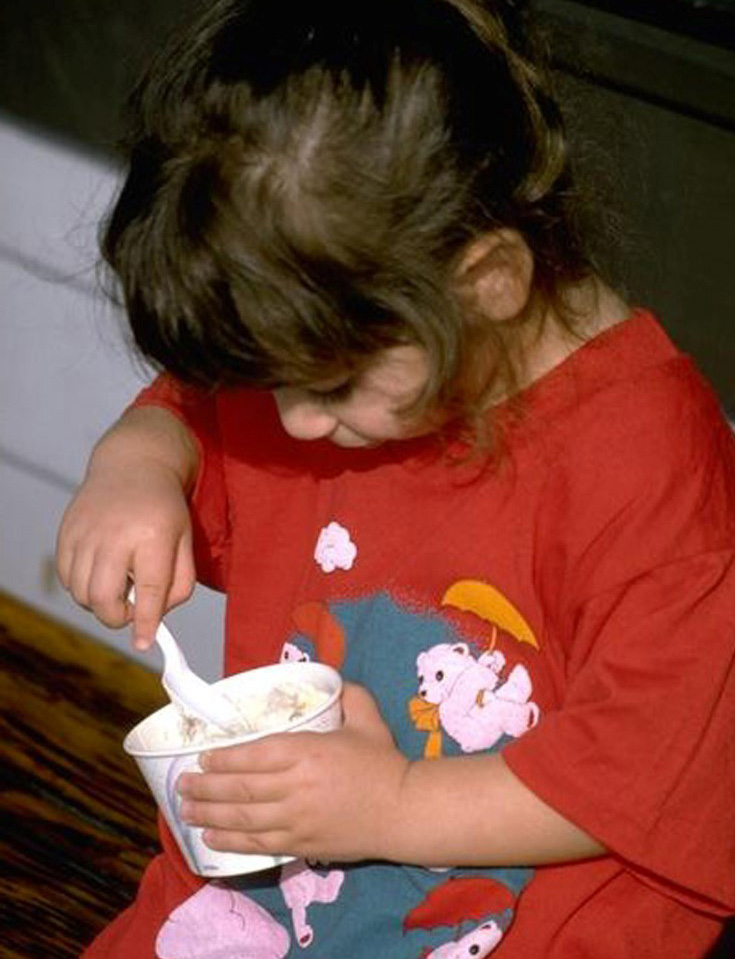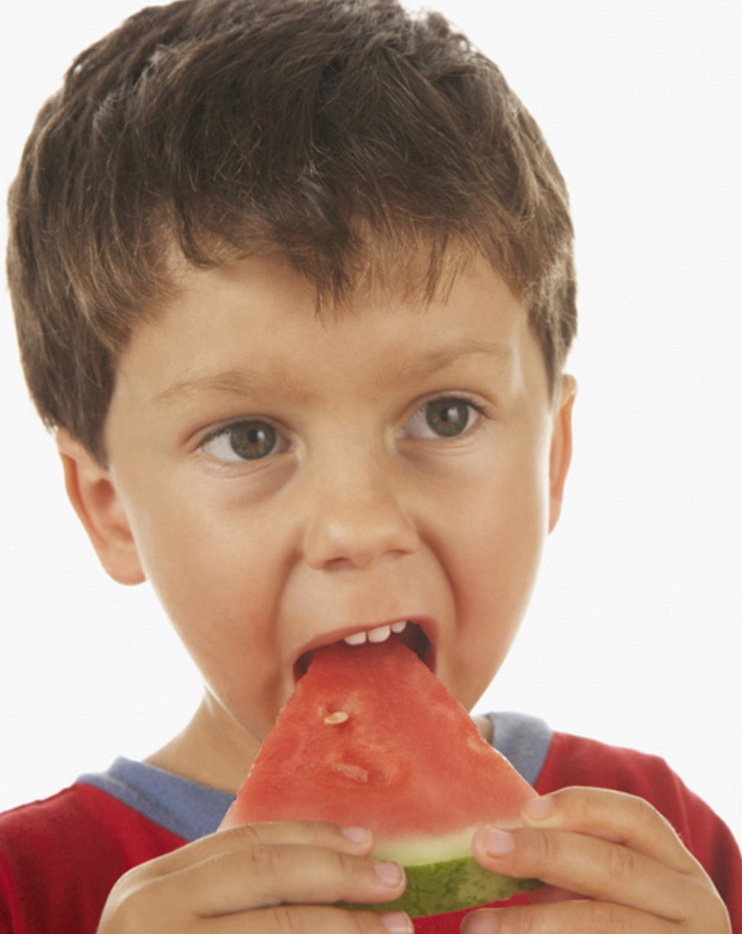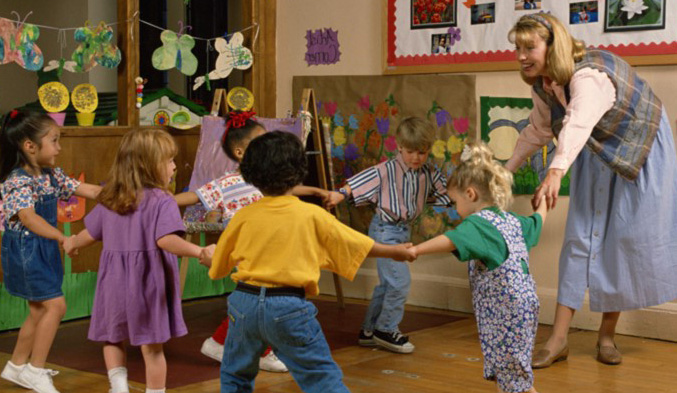
Leaving your child in child care or preschool for the first time may be hard for both of you. Your child will face new adults, new children, new places, new things, new routines, and new limits. She is used to your comfort, help, and protection.
She may be scared about being alone—and angry with you for leaving her. You may be worried that the teachers won’t care for her the way you would, or that they may ignore or hurt her. You may worry that she will cry or misbehave. These feelings are normal.
- You have taken the first step by carefully selecting child care that you think is right for your child. You have found child care workers that you like and can begin to trust. See the last newsletter for how to choose child care.
- Talk with your child about what is going to happen. She may not understand everything you say, but she will pick up your feelings of confidence. Say, “We will go to your new school. I will help you put your coat away and sit with you for a little while. Then, you get to stay and play while I go to work. After naptime, I will come back to get you. We will come home and fix supper.”
- If possible, visit the program with your child before her first full day. Let her watch and explore with your help and protection. Talk with the teacher about your child before she begins the program. Tell the teacher about your child’s eating and sleeping schedule, allergies, and other health concerns. Talk about what upsets your child and how she can be comforted.
On the day your child starts in a new child care program:
- Bring all the forms, clothes, equipment, and food that the teachers request.
- Bring one of your child’s favorite things, such as a stuffed animal, a blanket, or a toy car.
- Arrive a few minutes early so you can talk with the caregiver, put away your child’s things, and sit with your child to watch what is going on.
- With a calm face and hugs and kisses, say “goodbye” when it is time to leave. Tell her when you will return. Of course your child may cry, or scream, or kick, or retreat to a corner with her thumb in her mouth. She may like this place, but she wants you with her. Even though it is very hard, keep walking.
- It may help to call the teacher in an hour to learn how your child is doing. When you pick up your child, greet her with warmth and words that show you know it was hard for her. Tell her that you are proud that she made it through the day. Don’t be surprised if she is both glad to see you and mad that you left her.
Learning how to say “goodbye” to people we love is difficult. Most of us struggle with this all our lives. This may be your child’s first experience in saying “goodbye” to you on a daily basis, and it will take time for you both to learn how to do this easily.
When children misbehave we need to stop them, let them know what they have done wrong, and tell them why it is wrong. Then, we need to teach them the right thing to do.
- When we punish children, we expect to make them suffer physically or emotionally in “payment” for doing something wrong. Punishment usually does stop the unwanted behavior for a while, but it often causes other problems.
- Punishment may cause children to fight back with aggressive or naughtier behavior. It may teach them that they can do what they want as long as they are willing to “pay the price” of punishment. They could feel like “bad” children, unloved and unlovable and give up trying to please you.
- Punishment usually does not teach children what they should do — only what they should not do. It does not teach personal responsibility.
- A young child who has done something wrong may simply not know what he should have done differently. If Johnny throws a toy truck at his sister because she won’t let him play with her ball, he needs to learn why he should not throw trucks. He also needs help in learning how to take turns or find another toy to play with.
This calls for teaching, not punishment. Of course you need to keep Johnny from throwing trucks. You also need to tell him in simple words why he should not throw the truck and how he can play with other toys until it is his turn to play with the ball. If you are patient and keep reminding him, Johnny will learn how to cooperate. Punishment alone could not have taught him how to wait for his turn.
After starting childcare, some children change their eating and sleeping patterns. Some need more time curled up in their parents’ laps or sucking their thumbs. These things will change as your child becomes more comfortable in the child care program.
- Long after your child can say “goodbye” without tears or anger, she may show signs of this stress when she is with you. Children can be angels at school (where they want to please these new adults) and terrors at home (because they feel safe and can blow off steam).
- It helps if you drop in for a visit to see how things are going when no one expects you. If your child doesn’t know you are there, you will get a better idea of how the caregiver and your little one are doing.
Remember that you are helping your child learn how to adjust to changes that may be frightening. We all need to learn how to do this!
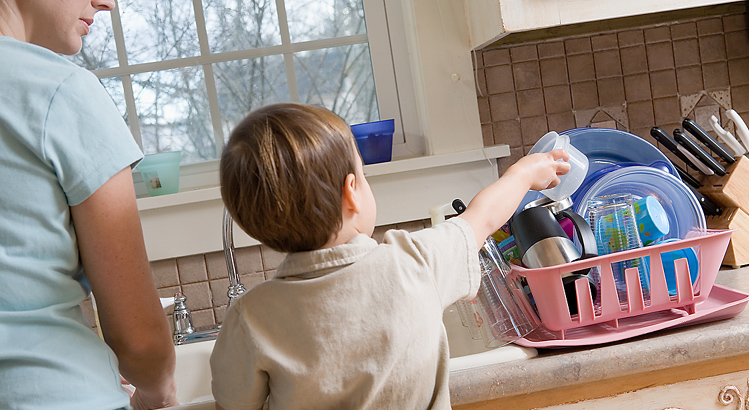
Helping around the house teaches children new skills. Start with tasks that you can do together —and last about 5–10 minutes. This lets your child feel proud of doing something with you. It is also a great way to spend time together. Toddlers can:
- Pick up toys and put them away
- Sort colored and white laundry
- Take clean clothes out of the dryer
- Set the table with forks and spoons, not knives
- Tear lettuce for salad
- Water plants
- Put pet food in bowls
- Put away unbreakable groceries —such as toilet paper, paper towels
Your toddler may be using the toilet, but some are not. Even toddlers who have learned to use the toilet may still wet the bed. Bed wetting is common through age 3. If your toddler is wetting the bed regularly:
- Make sure she wears a diaper or training pants to bed.
- Put a waterproof cover over the mattress.
- Don’t give her liquids after dinner.
- Make sure she uses the toilet before she goes to bed.
- When she starts to have dry diapers regularly in the mornings, she may be ready for nighttime training. Try letting her sleep in her underwear. Keep a waterproof cover on the mattress for accidents.
- Leave a light on in the bathroom for late night trips. It may take up to 2 weeks for her to learn to stay dry all night. If this does not work, then your toddler is not ready yet. Dress her in a diaper for bed and try again in another month.
